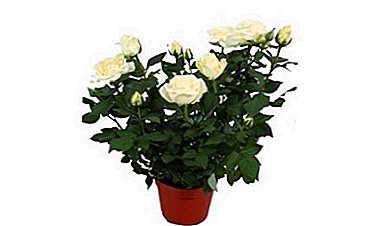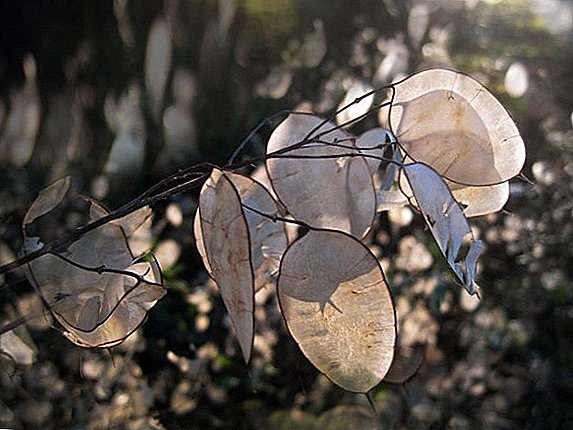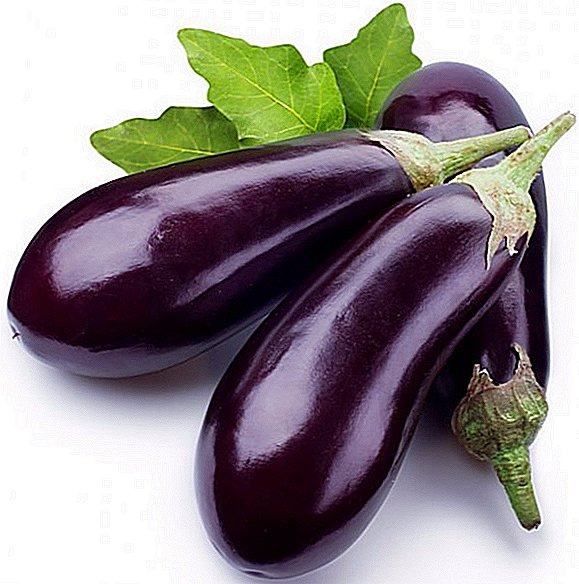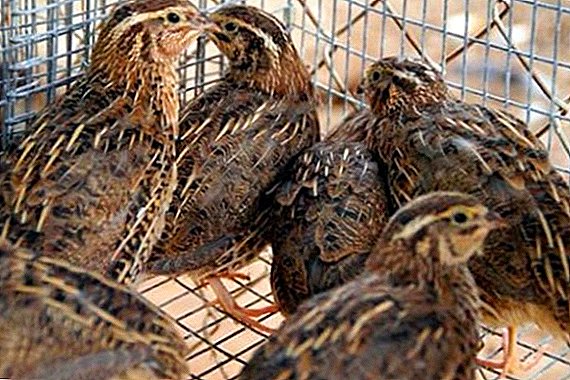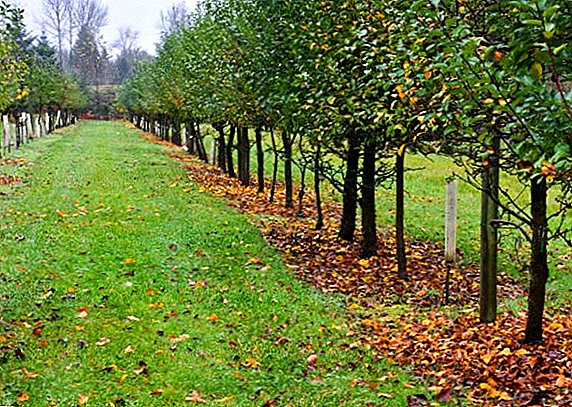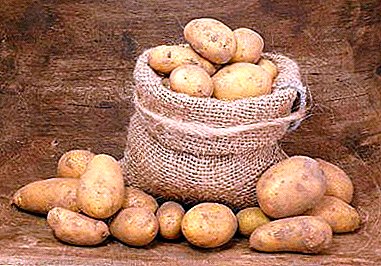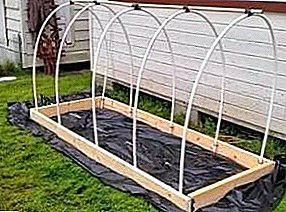
Adenium - a beautiful plant that came to us from South-West and East Africa.
The bottle shape of the stem and bright flowers will decorate any interior and will be a great addition to the home greenhouse, fully justifying its middle name - Desert Rose.
Despite its origin, the care of Adenium is not particularly difficult: room temperature (in winter from 10, in summer from 25 degrees), good solar lighting, regular watering and periodic spraying.
But even with proper care, the Desert Rose and the Fat Adenium may be subject to illness or pest attack.
Adenium diseases
Since adenium is quite disease resistant, the change in appearance often associated with inappropriate conditions.
The signs that are not suitable for growing Adenium are as follows:
- Leaves have become sluggish, the tips of the leaves turn black at Adenium - reason for excessive watering, too much water and not enough air. Corrected by changing the frequency of irrigation or replacing the soil (need a soil with high permeability of water and air. If, after abundant irrigation, the soil does not dry out within three days, the substrate must be changed);
- Black, wrinkled stem, sluggish leaves that turn black and fall off - excessive watering and cold temperatures. When cooling air should reduce the amount of water, then the flower will tolerate cooling normally. You can fix it by reducing watering, or moving the pot to a warmer place;
- Brown spots on adenium - sunburn. Maybe after the store it immediately provided intensive lighting without a period of getting used to or because of the bright sun after a long overcast weather. Disappear after the renewal of the leaves, so it is better to prevent burns. If the lighting is all right, then it can be a bacteriological burn, and it requires serious treatment;
- Grows slowly and does not bloom - probably needs a transplant or feeding. Also, growth slows in dim light and during rest;

- Flowers wither quickly - insufficient humidity and elevated temperature. Fixed by spraying the stem (flowers can not be sprayed) or transfer to a less hot place;
- Why have adenium dry tips of leaves? This is a more difficult problem in establishing the causes. In the fall, the plant has a dormant period and falling leaves are the norm. If the period of rest has not come, then such foliage indicates a sharp change in conditions (decrease / increase in temperature at night or in the afternoon, drafts). Also, adenium leaves dry with too bright suneither with too little watering.
Now consider the symptoms that can not be removed by time and a simple change of conditions:
- Bacterial Burn and Infections;
- Caudex rot;
- Pest attacks.
Next, consider why the leaves can turn yellow in Adenium.
Bacterial burn
Outwardly very similar to sunny, but occurs when humidity is highthat is why the leaves of adenium turn yellow.
The treatment is to stop spraying, collecting the affected leaves, treatment with a weak antiseptic solution and soil healing procedures. You can handle a weak solution of potassium permanganate, avoiding contact with flowers and soil.
Soil recovery procedures include treatment with special fertilizers and soil treatment with bactericidal agents. It is better not to use the latter, as there is a risk of destroying microflora in the soil, which will lead to the appearance of other infections and damage to the root system.
Fertilizer “Baikal-EM” is well suited for recovery, which is a concentrate of sleeping beneficial microorganisms. When applied, useful substances are produced, the smell of mold from the ground disappears, the growth and development of adenium is accelerated.
Caudex rot
 Very dangerous diseasewhich can lead to death. It is dangerous that the affected plant for a long time looks like a healthy one.
Very dangerous diseasewhich can lead to death. It is dangerous that the affected plant for a long time looks like a healthy one.
The reason - an excess of moisture in the soil. Often appears in the autumn-winter period when the intensity of irrigation does not change with a decrease in temperature.
Sign of Likely Rotting - at adenium yellow and fall leaves (bottom), but this feature may not appear or manifest in other circumstances (draft). The symptom of decay of caudex is a soft stem. If, when the stem is compressed at the ground level and above, softening is felt, then the flower is most likely rotted.
If adenium rotting rootsthen the only output - trim the stem above the level of rotting and root the remaining stalk. But if the disease has not yet struck the upper roots, adenium can be saved.
For this you need put the flower in a warm place and temporarily stop watering. After about two weeks, healthy tissue will separate from the affected tissue and the plant can be planted in fresh soil and looked after as before.
So affected adenium can be saved, but it is much easier to prevent the disease. Prevention is to change the schedule of watering adenium with the onset of cold weather.
When scheduling, you should follow the following rules:
- The lower the temperature, the less often and less water should be watered;
- When evening comes, the ground should be slightly wet, but not wet;
- Between irrigation the substrate should have time to dry;
- Watering is better with warm water.
A photo



Pests
Despite some resistance of adeniums to pests, especially in our climate, they are still subject to attack.
The main threats are:
- Rootworm;
- Mealybug;
- Spider mite
Rootbird
It is dangerous for adenium not only by drinking juice. It harms roots and poisons with inhibitors and causes the tips of the leaves to dry. It causes the greatest harm to young shoots.
Signs of defeat:
- Despite proper care, adenium stunted;
- Pale and faded foliage;
- Adenium leaves turn yellow;
- The presence of damage to the roots, the appearance of fungal diseases;
- Shriveled and dried leaves.
Prevention:
- Before planting it is necessary to steam the ground;
- Regular and timely watering;
- Regular inspection of the soil for fungi and parasites;
- In spring and autumn, pour water with insecticides 3-4 times before water appears in the drainage hole.
Methods of struggle
- Chemical method
- Root bath.
 Chemical method The counter is a treatment of the soil with such preparations as Confidor and Aktara. Thanks to the system action, they do an excellent job with the scarlet. Recommended concentration: The course of treatment includes at least three treatments with an interval of 5 to 10 days.
Chemical method The counter is a treatment of the soil with such preparations as Confidor and Aktara. Thanks to the system action, they do an excellent job with the scarlet. Recommended concentration: The course of treatment includes at least three treatments with an interval of 5 to 10 days.
Also apply insecticidal sticks, but for serious treatment they are not enough. They can be used as a preventive against the bite and other pests, such as aphids and spider mites.
Root bath - method of mechanical destruction of parasites. Produced as follows:
- The roots are heated in hot water (up to 55 degrees Celsius) for 15-20 minutes. After it is necessary to let dry before planting;
- Take the plant out of the pot, with the earth and rinse the roots. The earth should not remain;
- Disinfect or replace the pot;
- Trim infected areas. If the damaged area remains uncircumcised, after some time the worm will reappear;
- Wash the roots with an insecticide solution;
- To plant in a fresh or processed pot and in a new substrate;
- Keep away from other plants for some time. This is necessary to prevent possible contamination of other flowers.
Mealybug
 Sucking insect living in leaf sinuses, forming a waxy, white discharge on young shoots, foliage and buds. Adenium stops growing and blooms worse. Severe defeat mealybug can lead to death.
Sucking insect living in leaf sinuses, forming a waxy, white discharge on young shoots, foliage and buds. Adenium stops growing and blooms worse. Severe defeat mealybug can lead to death.
Signs of:
- Vatoobrazny, wax, white bloom;
- Sugary discharge and the appearance of soot fungus on them indicates a serious illness.
Fighting method:
- With a small lesion, adenium can be treated with a soap solution, using a tampon or brush, cleaning off the insects and their selection. After it is necessary to treat with a weak soap or alcohol solution.
- Spraying the plant with Aktara, Kofidant, Kofinor and Fitoverm. Handle carefully and in accordance with the instructions. Treatment should be repeated every 7-10 days.
The older the larvae, the harder it is to get rid of them.
Spider mite
Harmful insect, dangerous at all stages of development. It spreads very quickly and in a short time can infect all plants in an apartment.
Signs:
- Pale foliage color;
- The appearance on the leaves of a large number of yellow dots.
When dealing with a tick, the plant must be treated with one of the following means:
- Phytoverm - low toxicity, effective against ticks at a concentration of 2-5 ml / 1l.
- Masai is effective in combating both larvae and adults. The optimal concentration of 0.15-0.3 g / 1l.
- Borneo - A means of protective action, affects the tick at all stages of development.
- Floramate - contact acaricide, effective in local lesions.
All the above preparations are used in a mixture with Silvet-gold adhesive at a concentration of 0.5 ml per liter.




